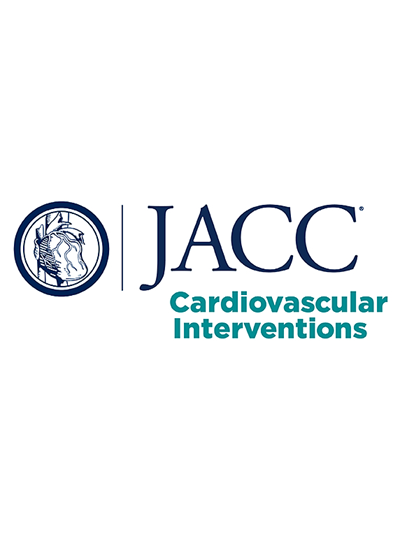A Revised Optical Coherence Tomography–Derived Calcium Score to Predict Stent Underexpansion in Severely Calcified Lesions
IF 11.7
1区 医学
Q1 CARDIAC & CARDIOVASCULAR SYSTEMS
引用次数: 0
Abstract
Background
Severe calcification is the morphology most strongly associated with stent underexpansion.
Objectives
The aim of this study was to revise an optical coherence tomography (OCT)–derived calcium score to predict stent underexpansion in severely calcified lesions (angle >270°) using a point-based system.
Methods
A retrospective observational study was conducted in which 250 de novo lesions undergoing OCT-guided stenting, with angiographically visible calcium and optical coherence tomographic maximum superficial calcium angle >270°, not subjected to atherectomy or specialty balloon treatment before stent implantation, were randomly divided into derivation (n = 167) and validation (n = 83) cohorts. The endpoint was stent expansion (minimum stent area/average of reference luminal area) at the maximum calcium deposition site, and stent expansion <70% was considered underexpansion.
Results
Stent underexpansion was present in 19.6% of lesions (49 of 250). In the multivariable linear regression model, the morphologic characteristics associated with stent expansion in the derivation cohort were: 1) calcium >270° with a length longer than 3 mm (regression coefficient = −10.3; 95% CI: −17.8 to −2.8; P = 0.007); 2) calcium angle of 360° (regression coefficient = −15.5; 95% CI: −25.2 to −5.8; P = 0.002); and 3) minimum calcium thickness >0.30 mm (regression coefficient = −12.4; 95% CI: −19.1 to −5.6; P = 0.0004). In the validation cohort, the calcium score (range: 0-3) was significantly correlated with stent expansion (regression coefficient = −9.1; 95% CI: −12.6 to −6.1; P < 0.0001).
Conclusions
This revised OCT-derived calcium score can serve as a reliable tool for identifying severely calcified lesions at risk for stent underexpansion.
求助全文
约1分钟内获得全文
求助全文
来源期刊

JACC. Cardiovascular interventions
CARDIAC & CARDIOVASCULAR SYSTEMS-
CiteScore
11.60
自引率
8.80%
发文量
756
审稿时长
4-8 weeks
期刊介绍:
JACC: Cardiovascular Interventions is a specialist journal launched by the Journal of the American College of Cardiology (JACC). It covers the entire field of interventional cardiovascular medicine, including cardiac, peripheral, and cerebrovascular interventions. The journal publishes studies that will impact the practice of interventional cardiovascular medicine, including clinical trials, experimental studies, and in-depth discussions by respected experts. To enhance visual understanding, the journal is published both in print and electronically, utilizing the latest technologies.
 求助内容:
求助内容: 应助结果提醒方式:
应助结果提醒方式:


